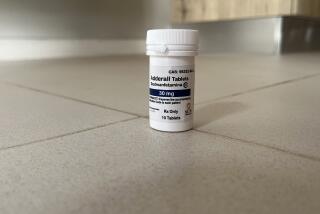‘They Came Like ... Beasts’
Seconds before the first wave struck the fishermen from behind, the air turned to mist and they heard a loud hissing noise, as if the sea had become a savage animal.
Veerapan Arul, 40, was heading back to shore with Sunday morning’s catch in a 12-foot fiberglass fishing boat when he noticed something strange: The calm waters had started to froth and bubble, and it seemed as if a wintry fog were rolling in.
“There was a ghastly ‘ssssssssss’ sound,” Arul recalled Monday. “I hadn’t seen or heard anything like that before.”
And then it hit, a swell so powerful it knocked Arul and five other fishermen sitting next to him into a torrent at least 15 feet high. Within minutes, they would ride a second swell and then a third, rushing hundreds of yards inland and then hundreds of yards back out to sea, fighting to keep the waves from sucking them under to their deaths.
“They came like possessed beasts to destroy the whole village,” said Arul, whose mother drowned along with 63 of her neighbors in the tsunami.
“In the aftermath of it all, it’s really gruesome,” he said. “Playing kids not knowing that their parents are no more, and people who know what has happened not being able to digest the horror -- a scream, more screams and wails that only the carnage of a natural disaster can bring.”
For 200 years, the ocean has sustained the villagers here in Thazanguda, about 15 miles south of the former French colony of Pondicherry on India’s east coast. Generations have cast their nets into the sea. But now inhabitants fear the water as if it were a menacing creature ready to pounce out of nowhere.
“Everyone, including me, is fed up with our lives,” Arul said. “But I have to live for my wife, my father and two kids.”
Three waves hit the southeastern Indian coast over a period of 25 minutes, said police officer Kadhir Ali, who was guarding homes in this village with several dozen colleagues.
Ali has seen big waves before, but those on Sunday didn’t roll like normal surf, he said.
“This time they came like one large concentrated tangible mass, like a huge wall,” he said, moving his open hand vertically through the air. The first wave was around 15 feet, the next 20 feet and the third as high as 25 feet, he said.
“A lot of people died because they were dashed against a tree, or poles, or roofs of houses,” he said. “Lots more of them are critically injured in hospitals.”
In villages and towns along the coast, emergency crews, dazed survivors and volunteers searched Monday for the missing, and retrieved bodies from ruined buildings, stagnant ponds of seawater, backwater channels and devastated beachfronts.
Cuddalore district, a region that includes this village, reported almost 400 confirmed deaths Monday. At least 50 people were missing.
At Cuddalore town’s Hindu cremation site, victims of the tsunami were buried in mass graves because health officials feared that waiting for the preferred ritual of funeral pyres could spread disease. By the afternoon, 175 Hindus had been buried at the Manjakuppam cremation ground in five pits that were dug to hold up to 60 bodies each.
At the gates, survivors wailed and wept uncontrollably.
“My wife and my son, they are no more,” a man named Swaminathan cried again and again.
He stood against a whitewashed wall, as if he didn’t know where to turn, clutching his surviving child, 6-year-old Madhivadhani. Her mother, Mahalakshmi, 27, and 4-year-old brother, Rahul, drowned when the waves pounded the village of Chinapettai.
In the center of Cuddalore, a 26-year-old woman named Thenmozhi staggered up and down the middle of a main street, leaning on an elderly relative, wailing over and over: “Oh, what sin did I commit? Why did the Almighty take my daughter away?”
The waves snatched her 9-year-old, Nirmla, from the family’s house and pulled her out to sea. Her body hasn’t been found.
In the village of Thazanguda, the waves came down like giant sledgehammers on the first two rows of houses nearest the sea, smashing them into rubble of brick, concrete and thatch. Just yards farther inland, the water rushed into houses and sucked out furniture and appliances, but left most of the buildings standing.
The middle of the village of several hundred people, who are Muslim, Christian and Hindu, is now a small lake of seawater poisoned by rotting fish and livestock.
Dogs scavenged among the animal corpses for food. A rat the size of a small cat clung to the mud in the shadows of a ruined house, too stunned to move.
Next to one street littered with broken coconuts, splintered furniture and children’s schoolbooks, a hand-pedaled wheelchair stood upright, its wheels twisted and gears bent out of shape. The word “Oasis” was painted in white on the front.
A passing survivor said it belonged to an 18-year-old disabled woman, Maha Lakshi, who was taken by the waves.
More to Read
Start your day right
Sign up for Essential California for news, features and recommendations from the L.A. Times and beyond in your inbox six days a week.
You may occasionally receive promotional content from the Los Angeles Times.






